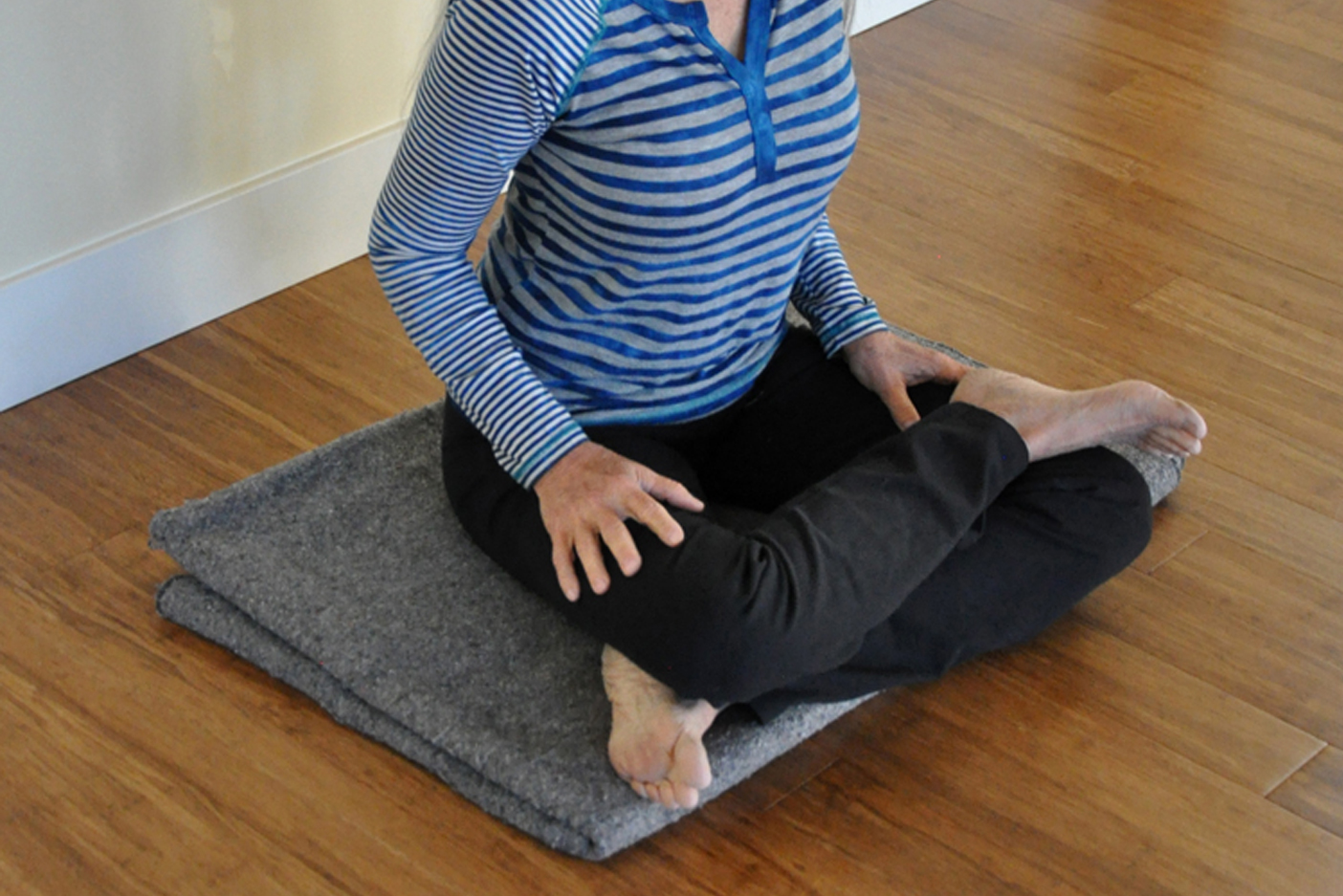
Fire transforms—wood into ashes, ice into water and then into steam, raw ingredients into a warming meal. In the Vedas of ancient India, fire was personified by the two-headed fire god Agni. Stemming from the same root as the Latin ignire (to ignite), Agni was the force behind heat, light and will power. According to the Vedas, Agni fueled the sun, the stars and lightning.
In Ayurveda, Agni is the word for digestive fire, the energy that ignites the organs of digestion to process the food we consume. This month’s pose, Agnistambhasana (agni=fire, stambh=log) helps ignite the digestive fire, warming us from the inside and keeping the apana—the downward-moving energy that governs digestion and elimination—flowing. It is also a powerful pose for stretching the glutes and groins. People with knee or back issues should approach Agnistambhasana with care.
Like all other yoga asanas, except maybe Savasana (Corpse Pose, the final relaxation pose) Agnistambhasana (Fire Log Pose) is not for everyone, at least in its “final” form. I put the word “final” in quotes, because after 37 years of practicing and observing thousands of practitioners, I understand that there’s no such thing as a “final” version of a pose because all asanas are living, breathing, evolving processes. No two people’s practices will look the same—ever.
Like Padmasana (Lotus Pose), Fire Log Pose requires hip joints that are capable of extreme external rotation. Depending on the shape, depth and placement of your sockets and the shape, size and rotation of your femur heads, this may or may not be possible. The good news is that variations are plentiful and effective. The benefits of asana practice have never depended on accomplishing preconceived ideas of what poses should look like.
I’ve often heard this pose called “Double Pigeon,” because both legs are in the same position as your front leg in Pigeon Pose. Despite the fact that Agnisthambhasana is more challenging for most people than Pigeon Pose, I’ve come to prefer it. Without going into detail, I feel that it confers the same benefits to the glutes and groins without the risks inherent in Pigeon Pose’s asymmetrical action on the sacroiliac joint and the possibility of wearing down hip-joint cartilage.
The first step in building a fire is to build a solid foundation. You set your logs up so that they will remain stable and not fall outside the fire ring, but leave enough space to ensure that air can easily circulate between them. In Fire Log Pose, we also begin by setting a solid foundation. What that foundation looks like will vary from person to person. The most important element for a strong foundation in seated asanas, is even grounding of your sit bones. Make sure that whatever variation of the pose you choose gives you a solid, even base.
How to Practice Agnistambhasana
- Begin by sitting cross-legged on a mat or blanket. Reach back and feel your lumbar spine. Are your vertebrae poking out? If so, fold your blanket and sit on it so that your pelvis is elevated and your feet are on the floor.
- Bend your left knee and move your left leg into a cross-legged position.
- With your left heel close to your pubic bones, place your right ankle across your left thigh—all the way across so that your ankle is resting on your thigh and you can keep your ankle flexed.
- If your knee is way up in the air, try this: Slide your entire right leg a bit to the right, place a yoga block in front of your left leg and rest your right shin on top of the block. If your knee is still chasing your chin or either knee is uncomfortable, stretch your left leg out straight in front of you and place your right ankle across your thigh. A simple cross-legged pose (Sukhasana) can also be a suitable substitute.
- If, on the other hand, you place your left heel in front of your pubic bones and your right ankle rests easily across your left thigh, you can begin to inch your left foot out away from your pelvis, as long as your right leg can continue to rest on your left thigh.
- Here’s the part that ignites your agni: Leading with the pelvis, bend forward, keeping your torso long. Do not bend from the waist, leaving your pelvis behind.
- Support yourself on your hands or elbows.
- Take 5 to 10 deep breaths here. On an inhalation, lift your torso back up to upright, stretch your legs out in front of you and allow your legs to settle for a few breaths. Give your body some time to integrate Agnistambhasana before moving to the other side.
Remember that your second side may be very different from your first side. We all use our bodies asymmetrically, and quite often we aren’t aware of how different our sides are until we start to practice asana. Always be mindful of your knees. If at any point during the practice of Fire Log Pose—or any pose—your knees feel uncomfortable, either painful or overstretched, come out of the pose. As my teacher/friend Donna Farhi says, “There’s no good knee pain.”
Updated article from January 29, 2016.
